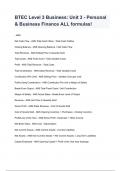Types of Evidence
Armstrong categorizes evidence into several types to underscore the varying reliability and
applicability of each in informing advertising practices:
● Casual Observation:
○ The most basic form of evidence, derived from everyday observations, which
Armstrong critiques as unreliable due to the complexity of advertising and the
challenges in obtaining clear feedback.
○ Expert Advice and Typical Practice: While more structured than casual
observations, relying on the accumulated wisdom of experienced advertisers, this
type of evidence often lacks empirical backing and can be biased by personal
experiences.
● Empirical Evidence: Subdivided into non-experimental, quasi-experimental, and
experimental data, empirical evidence offers a more rigorous basis for advertising
principles.
○ Non-experimental Data: Systematic observations or analyses that, while more
reliable than casual observation, often fall short in complex advertising situations
due to the inability to control for all variables.
○ Quasi-experimental Data: Studies that control for some but not all variables
provide a middle ground in reliability between non-experimental and experimental
approaches.
○ Experimental Data: The gold standard for evidence in Armstrong's view, involving
controlled studies that isolate the effect of a single variable (either in laboratory
settings or in the field) to provide the most reliable insights into advertising
effectiveness.
■ Lab experiments
■ Field experiments
○ Meta-analyses of experimental findings: The best evidence, involves a formal
collection and analysis of all relevant evidence on a given principle, especially
when the evidence involves laboratory and field experiments. Meta-analyses
provide full disclosure on how the researchers searched for studies, coded the
results, and summarized the findings. Findings from meta-analyses are more
valid than those from traditional reviews (Beaman 1991). The meta-analyses are
of particular value when the conditions are well specified.
,Barriers to the use of evidence-based principles
Why do so many advertisers ignore the research on advertising? Here are some valid concerns:
● Relevance: Probably less than 5 percent of journal articles on advertising contain useful
findings.
● Replication: Only a small percentage of the studies in advertising have been replicated,
thus posing a question about their reliability.
● Bafflegab: Many academics write in a manner that is nearly incomprehensible. Thus,
many relevant studies needed to be “translated.”
Principles and Conditions
Principles are action steps to be taken under given conditions. Conditions refer to the way in
which one describes and defines the advertising problem being considered. There are three
important and overarching conditions that I will now describe: the advertisers’ objectives,
product offerings, and target markets.
Objectives
“The development of an effective advertising campaign should begin with a meaningful,
complete, and clear statement of objectives. “ Objectives should be clearly defined, measurable,
and directly tied to the organization's ultimate goals, such as profitability or market share growth.
Effective advertising campaigns begin with a thorough understanding of what they aim to
achieve, whether it's increasing brand awareness, driving sales, or enhancing customer loyalty.
Armstrong criticizes many advertising campaigns for their vague or immeasurable objectives,
highlighting the need for specific, relevant, and quantifiable goals to guide the selection and
application of advertising principles.
Relevant Objectives
“The objectives of an advertising campaign should be relevant to the ultimate objectives of the
organization. One way to identify ultimate objectives is to keep asking “why?” until it is no longer
sensible to ask.” This means that advertising should not just aim for abstract goals like
increased visibility or brand awareness but should tie back to concrete business outcomes like
sales growth or other key performance indicators that contribute to the company's success.
Market share expansion is not always a good strategy. (not when it harms yourself, as illustrated
in the book, pp.17-18),Relevant objectives ensure that advertising efforts are focused and
contribute to the overall business strategy.
Comprehensive Objectives
“To specify comprehensive advertising campaign objectives, consider all stake-
holders—stockholders, employees, suppliers, retailers, customers, and local community
members—who might be affected by an ad. What are the ultimate objectives for each of these
,groups?” This includes not only immediate goals such as lead generation or sales but also
longer-term objectives like brand building, customer/employee loyalty, and market positioning.
Explicit, Challenging, and Achievable Objectives
An advertising campaign should be centered on explicit written objectives. They should be
challenging but achievable. Achievable objectives balance ambition with practicality, motivating
teams with goals that are tough but not impossible.”
Measurable Objectives
Measurable objectives enable advertisers to assess the success of a campaign. “Measurable”
means that progress should be assessed in quantitative terms that specify the period over
which it will be achieved. “
Product Offerings
I use the word “product” in the most general sense here. It applies not only to the features of a
good or service but also to its image, price, method of distribution, support, and guarantees. The
following conditions represent the most important aspects of the product. Understanding them
helps in using the advertising principles.
Comparative advantage?
Does the product offer meaningful benefits that competitors’ products do not offer? If yes,
advertisers can make strong arguments in their ads.
High or low-involvement products
Low involvement: Goods when customers do not do much thinking when considering a
purchase. High involvement when customers think carefully about the purchase.
In a high-involvement situation, people think about an ad’s claims; however, in a
low-involvement situation, customers are influenced by seemingly irrelevant considerations
because they pay little attention. It is not entirely correct to describe a product as high or
low-involvement because the terms relate not only to the nature of the product, but also to the
involvement of the customers who are considering the product being advertised. Customers put
more effort into the evaluation of some products than others. In addition, customers’ prior
attitudes, knowledge, interests, or needs—as well as the nature of the product itself—can affect
involvement. Finally, they are more involved when they are considering the purchase of such
products. For simplicity, I will focus on the nature of the product.
Identifying a product as high or low-involvement could be critical to the design of an
advertising campaign.
Utilitarian or Hedonic Products
● Utilitarian Products: These are products purchased for their practical utility and
functionality. Advertising for utilitarian products often focuses on the product's
usefulness, reliability, and the problem-solving benefits it offers. The messaging is
generally straightforward and emphasizes how the product meets a specific need or
improves the consumer's daily life.
, ● Hedonic Products: Contrary to utilitarian products, hedonic products are bought for
pleasure, enjoyment, or emotional satisfaction. Advertising for hedonic products
leverages emotional appeals, highlighting the joy, excitement, or status the product can
bring to the consumer's life. The advertising often uses vivid imagery, storytelling, and
sensory appeal to evoke emotions and connect with the audience on a personal level.
Pro-social versus Commercial Products
● Pro-social products are those that appeal to altruism. The advertiser is seen as trying to
help others rather than seeking personal gain. As a consequence, people are inclined to
trust the ad’s claims.
● In contrast, a for-profit ad is obviously self-serving, so people tend to be wary
Search, Experience, or Credence Products
● Search products are those whose features can be checked prior to purchase.
● Experience products are those that can be accurately evaluated only after the product
has been used.
● Credence products are those that cannot be evaluated accurately even after the product
has been used because of the consumer’s lack of technical expertise or because the
cost of checking the truth of a product’s claim is higher than the value of the information.
Target Markets
When a given product can be sold in many distinct target markets, each market might require a
different campaign. Advertisers occasionally overlook this. Many characteristics of customers
can influence thinking about how to influence them best. Target market surveys can supplement
these judgments. What does the target market currently know and believe about the brand and
product category? Find out what customers need to know about your product prior to taking
action. This involves asking questions such as: What benefits are they seeking? Do they know
how to purchase the product?
Some of the more important considerations regarding target markets are as follows.
What Interest Groups are Relevant?
Ads can be targeted to customers and the community, employees, investors, suppliers, retailers,
or employees. Sometimes, it pays to target those who can influence others. When trying to
discourage certain types of behavior, it might be better to aim the campaign at influencing
people to censure the actions of others. This approach has been used in anti-smoking
campaigns. Advertisements are aimed at people who object to smoking, encouraging them to
express their disapproval when they see people smoking indoors.
Is the Product (or Brand) New to the Market?
Is the product an improvement of an existing product, or is it something the consumers have
never seen? This aspect, “newness,” is important when devel- oping an advertising campaign.
The advertising campaign should typically change over the life cycle of the product. Customers
need information when products are new; emotional appeals become relatively more effective
when products are well known.










